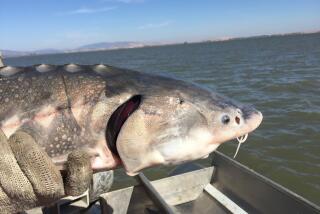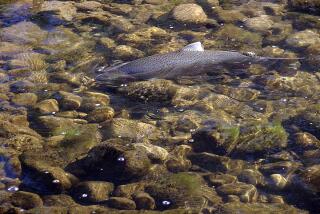Ski resorts barely make eco grade
- Share via
Choosing an environmentally friendly ski resort got more complicated last week after a coalition of environmental organizations released its annual Ski Area Environmental Scorecard.
The Ski Area Citizens’ Coalition, a collection of 24 groups, evaluated the environmental and development activities of 76 U.S. ski resorts since 2000. The average grade for Western ski resorts, a middling C+, is higher than in prior years. But ski industry executives say the group’s report is unfairly weighted against growth and is inconsequential.
Although the report examines recycling, water and energy policies, 70% of each grade is determined by a resort’s expansion in the last five years. Industry executives argue that expansion is an unfair gauge. “We’re striving to focus on sustainability in energy, water and recycling,” said Geraldine Link of the National Ski Areas Assn. “But we are businesses. We can’t pledge we’ll never grow.”
Joan Clayburgh, of the Sierra Nevada Alliance and a director of the coalition, hopes the report will “call attention to resorts that are growing in ways that have less of an impact on the environment.”
— Charles Duhigg
Attack of the alien escargot
An invasion of New Zealand mud snails into Putah Creek is likely to lead to an emergency closure of a large stretch of the famed Northern California trout stream. The California Fish and Game Commission last week recommended a 120-day closure that is expected to be finalized next Tuesday and go into effect Jan. 1. The closure would take place on a six-mile stretch of the popular fly-fishing creek, which runs from Monticello Dam on Lake Berryessa east of Napa Valley to the Sacramento-San Joaquin River Delta.
The alien invaders — no bigger than buckshot — multiply quickly and spread rapidly along river bottoms. They can be transported from one waterway to another by fishermen, kayakers or others whose equipment comes in contact with the snails. They aren’t directly harmful to fish, but they eat nutritious invertebrates such as mayflies and stone flies which the fish need. Once established, the mud snails are extremely difficult to control.
Two years ago, they were discovered in California’s Owens River in the eastern Sierra.
“It’s potentially controllable at this stage,” said Ed Pert, a Department of Fish and Game biologist. However, he added, “if the Pandora is out of the box, there may be no reason to keep the creek closed.”
— Pete Thomas
Bison back in the cross hairs
Montana wildlife officials are planning to allow hunting of bison that wander out of Yellowstone National Park and onto state land. The move is almost certain to rekindle the controversy over whether the animals should be hunted at all.
The public hunting of bison was stopped a decade ago after a public outcry and threatened boycott by animal rights activists. But Montana’s Legislature voted last year to resume the hunts last year, as a method of disease control. Bison wander out of the park to forage in Montana, and some carry brucellosis, which causes pregnant domestic cattle to abort. Hunting wcould begin in 2005 after a public comment period.
Chris May of the Buffalo Field Campaign, a group dedicated to protecting the bison herd, said his group would continue to work to keep the bison inside Yellowstone.
— J. Michael Kennedy






